How to Structure an Essay
Students – make more time for your flourishing social life by simply doing a great job with that essay the first time around.
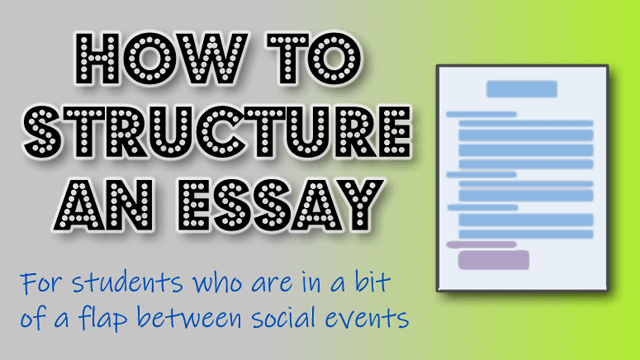
Page Contents
- 1 Introduction
- 2 The Essay Building Method
- 2.1 Prepare
- 2.2 Examine the Brief
- 2.3 Consider the Essay Goals
- 2.4 Create a Title
- 2.5 Create a Contents List
- 2.6 Research the Essay
- 2.7 Propose Some Headings
- 2.8 Transfer Your Notes to the Essay
- 2.9 Compare with the Brief
- 2.10 Break the Notes into Groups
- 2.11 Check the Contents List
- 2.12 Integrate the Text
- 2.13 Compare with the Brief
- 2.14 Continue Refining Your Essay
- 3 Summary
- 4 References
Introduction
Recently I helped a student structure an essay for her University course. She was getting into a tangle for a few reasons, and the main issue was not knowing how to create a framework for the essay.
You might find this method useful, its one I evolved for my own use. If you follow it you will save time and have a good idea where you are in the process. The method is suited to factual reports, but could also be used to develop a novel… all you need do is delete all but the highest level headings when you are finished.

Note: I’m not a teacher. I have simply written numerous documents and articles. You should decide if this method will suit your needs before you begin.
The Essay Building Method
Guiding your writing with this method will provide clarity and remove effort and confusion. You will use the headings as guide rails for the content so your headings must be accurately worded to express the exact meaning you require.
Prepare
Create a folder on your PC to contain all your work for this essay containing the following:
- A copy of the original brief you were given.
- An empty document with a clear essay title marked with a two-digit version number (eg: MyEssay – v01.docx)
- A subfolder for all your research.
Examine the Brief
Copy the brief into the first version of your essay.

Assuming that the brief is a fairly wordy block of text explaining what you are required to achieve: split its sentences down into a bullet point list. Trim out redundant words and phrases taking care not to lose information or change the meaning.
Compare the result with the original text to make sure nothing is missing. delete the original wording, bearing in mind you should have a copy in your folder if you have any doubts later.
Consider the Essay Goals
Take some time to consider the bullet points you have created and make a note of special areas of interest, side issues and questions that arise.
Create a Title
If you have followed these instructions you will have your brief in the form of a bullet point list at the top of your essay document. Underneath the list, create a good title for the document that represents the brief and your view of it. This will influence your research.
Create a Contents List
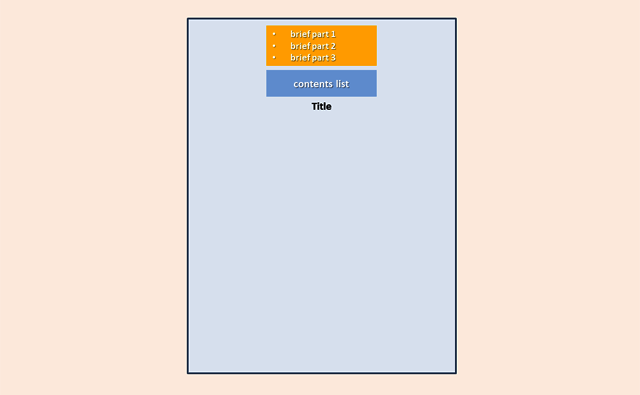
Above the title insert and a contents list. Having a contents list when you start framing the headings is crucial to this way of working, so you must write the essay using software that can provide the list for you automatically (eg: Word for Windows).
Research the Essay
With continued reference to the goals and the notes derived from the brief, collect all the information you think useful. Ensure that you keep references to the source material and time offsets for videos so you can go find your way back if necessary. Copy out the important fragments into a separate page to make sure they do get into your essay.
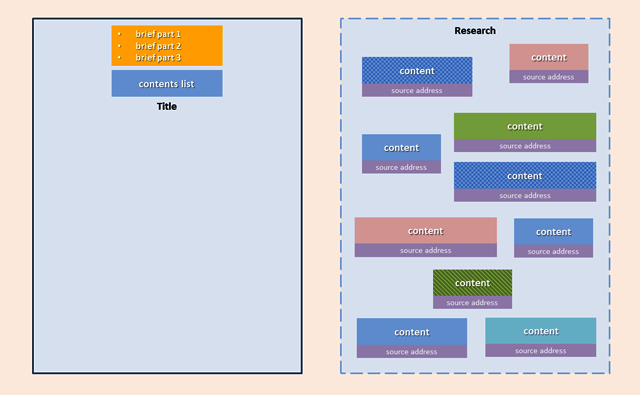
Propose Some Headings
In WordPress, the title is ‘Heading 1’ and all following titles are at most ‘Heading 2’. The Resource list and introduction/overview will be ‘Heading 2’.
Type in the obvious headings and any that might have emerged from your research and consider the hierarchy that they might have. Don’t forget to add a heading for the resource list.
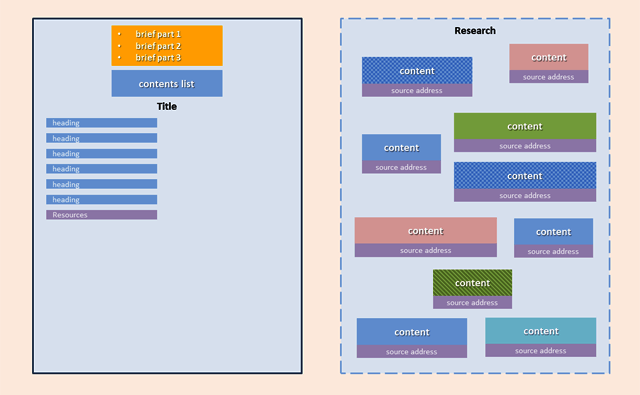
Update the table of contents. Check that the headings are in the right order and hierarchy, then move them around if necessary. If you aren’t sure, leave it as-is since it will make more sense when you have added some content.
Save the document as a new version.
Transfer Your Notes to the Essay
Go through all your notes, copying points of interest over to their correct heading. Create new headings when new information requires it. When all of the source information has been transferred, tidy away the source information.
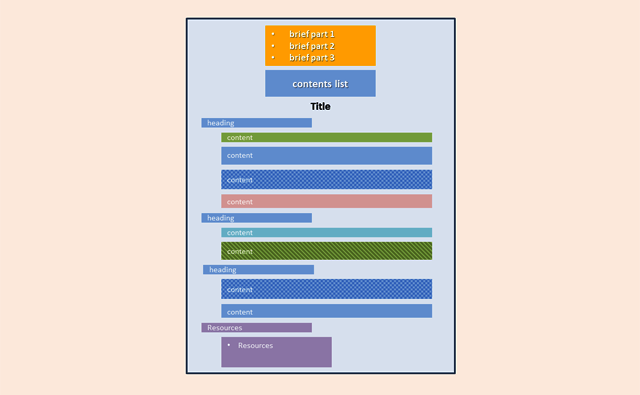
Compare with the Brief
Before you go any further, its a good time to see if what you have provided so far still matches the brief and is in the right ball-park for the number of words. Correct any issues you have before you go any further.
Save the document as a new version.
Break the Notes into Groups
Go through the document and break down the notes into groups containing just one idea each, composed of one or more sentences. Separate the units with a clear line.
Rearrange the units into a coherent order and move them to new or existing headings as necessary. Remove duplication and redundant text.
Save the document as a new version.
Check the Contents List
Now that all of the source material has been distributed across a revised set of headings and sorted into the correct order, its time to recreate the contents list and check that all the headings are in the right order and have the correct position in the hierarchy.
Check to see if the headings could be improved or if they might need to change order. If you need to change the order, Word for Windows has an ‘outline’ mode that will help you move a heading and all text related to it in one go.
Check to see if the word count matches your expectation.
Save the document as a new version.
Integrate the Text
Now you will need to go through the document and integrate the isolated groups into paragraphs that flow. You can now apply grammar rules to the text.
Don’t forget to fill out the resource list.
If you get stuck when integrating text passages, try reading the text out loud to yourself. You will quickly be able to decide if it makes sense or if it sounds cliched. Reading aloud prevents you from skipping over the words and making assumptions that it’s ok.
Save new versions after each significant chunk of work and at the end of this phase.
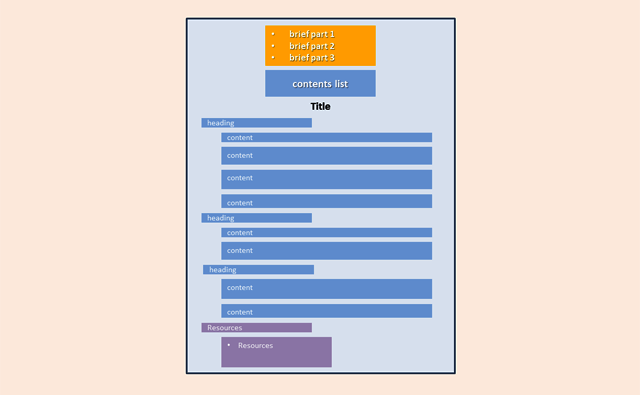
Compare with the Brief
At this point, you have all the information you have collected and learned edited together into a complete working document. You may have deleted some of it. All the ideas and headings are now clear and are in good shape.
Go back to the brief and ensure all the points it raises are still covered by your document. Although you will have done this already at an earlier stage, by now you will have learned a lot more about the subject and you can think about the finer details of the brief and your essay.

when you are satisfied you have everything covered, delete the brief and make sure the contents list is up to date. You may at this point want to delete the contents list. In some situations, it might look like overkill to keep it.
Save the document as a new version.
Continue Refining Your Essay
If you have time in your schedule you should plan to re-read the document every few days. You will need to put it aside for 24 hours or more in order to clear your mind. When you come back to it you will be able to review the work much more effectively. Repeat this process a few more times if you can.
Summary
The crucial part of this method throughout is to use the table of contents as your guide at all times. The final headings should be accurate, clear and in a consistent style. A good contents list can be used as a summary of the document by itself. The way you write the headings will be guiding your research and thinking, so be careful with the words you use.
References
I don’t have any official references for this method, it simply became the way I tackle a lot of writing. Your lecturer or teacher may have a different opinion (but you probably wouldn’t be here if you knew what that was).
